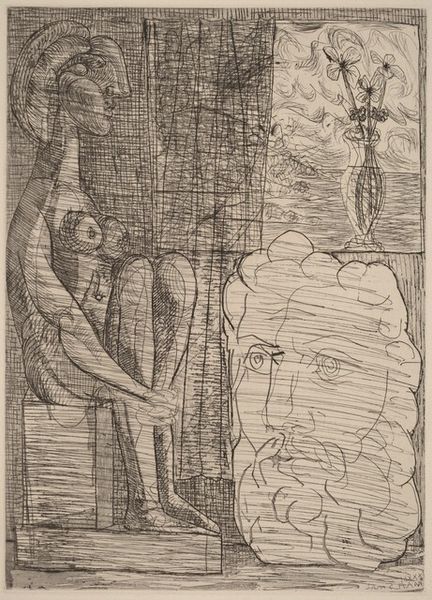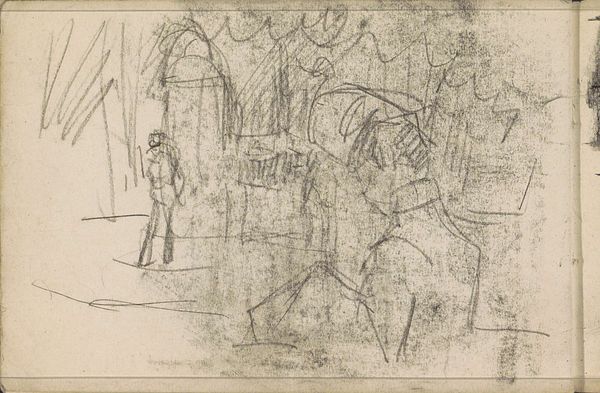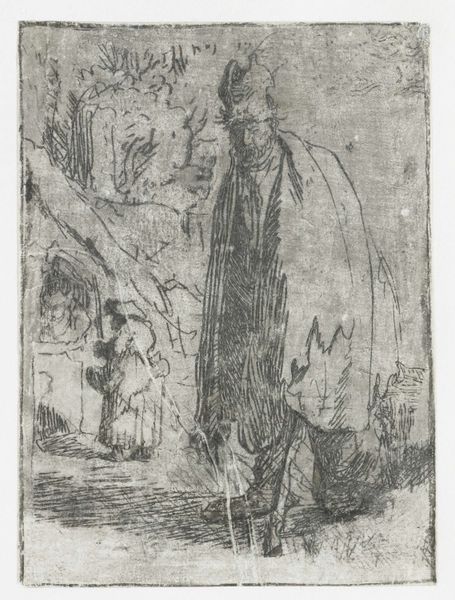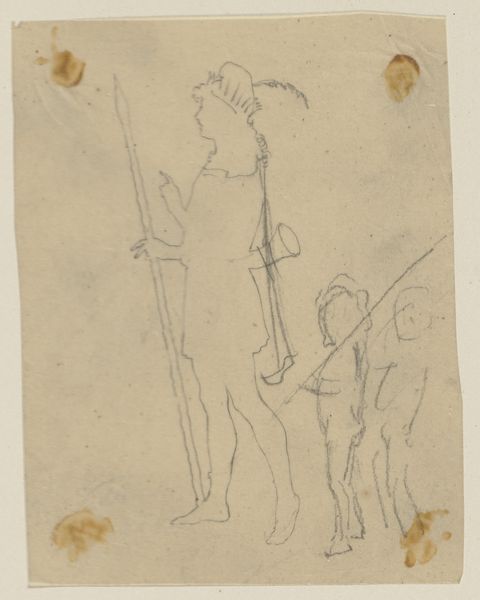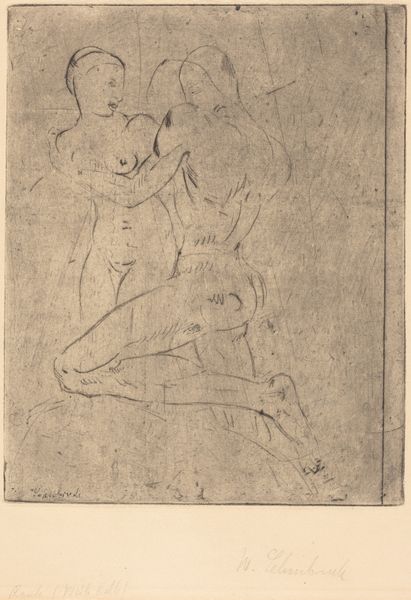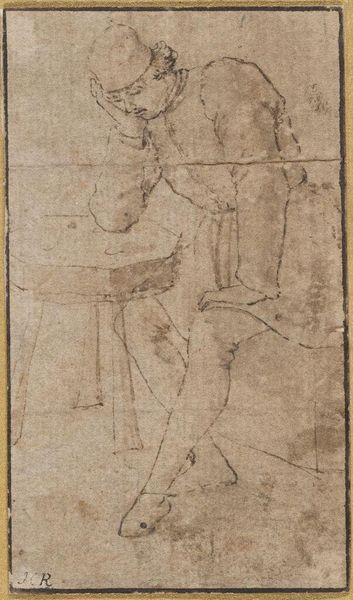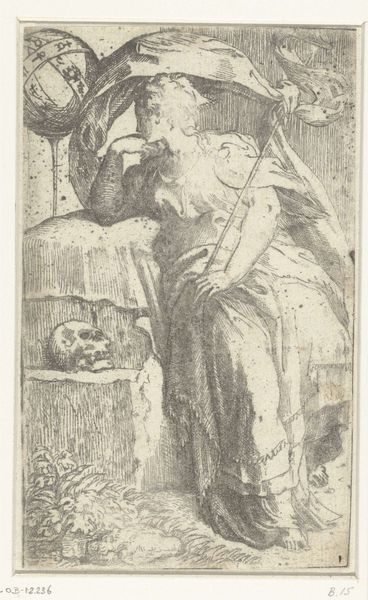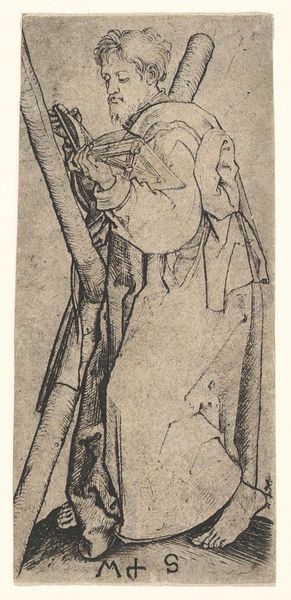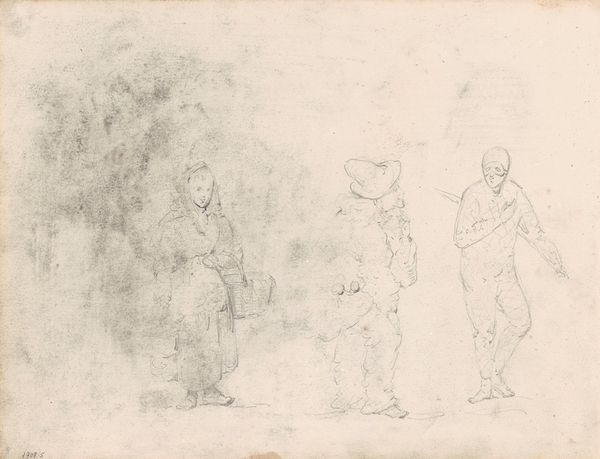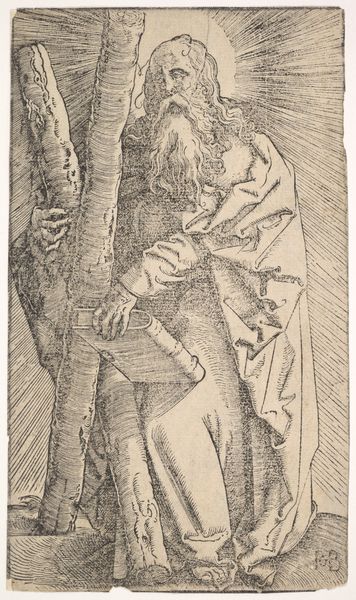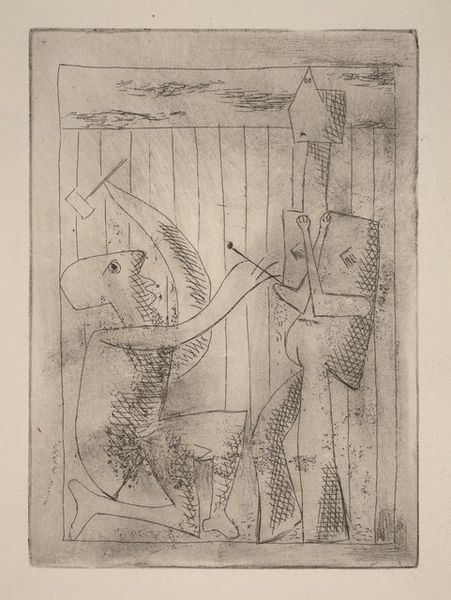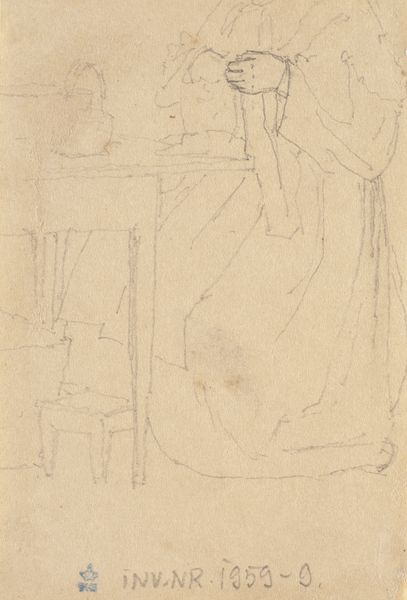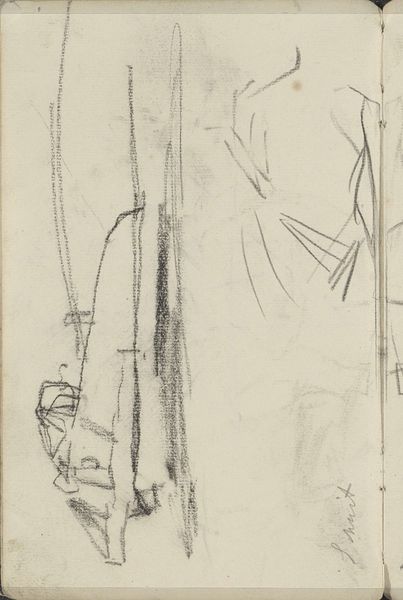
Family of Acrobats with Macaque (La famille de saltimbanques au macaque) 1905
0:00
0:00
drawing, print, etching
#
portrait
#
pencil drawn
#
drawing
# print
#
etching
#
pencil sketch
#
figuration
#
line
#
history-painting
#
realism
Dimensions: plate: 23.5 x 17.8 cm (9 1/4 x 7 in.) sheet: 44.8 x 29.8 cm (17 5/8 x 11 3/4 in.)
Copyright: National Gallery of Art: CC0 1.0
Curator: Oh, look! "Family of Acrobats with Macaque," a 1905 etching by Picasso. The printmaking process feels incredibly delicate here. Editor: Delicate, yes, but also strangely forlorn. There's such a sense of spareness to it. These acrobats look less like performers and more like ghosts of performers. The macaque seems sad. Curator: That macaque is intriguing! In Picasso's imagery of the era, animals often symbolized something about the human condition – particularly the experience of the artist. Perhaps this monkey stands in for something childlike and vulnerable in the lives of these traveling performers. The macaque seems excluded, almost an outcast within the family tableau. Editor: Yes, exclusion! And I find myself drawn to the hands. The woman lifts her arms high, perhaps carrying another child? Her gesture is confident, almost athletic. But the acrobat with the cap has his hands tied or bound somehow. Those hands evoke limitation, constraint. Even oppression. What is the relationship between the figures? What keeps them together or what divides them? Curator: The "Saltimbanques" or wandering circus performers, were a frequent motif in Picasso's work during his Rose Period. Some argue they represent the artist and his bohemian friends—a self-aware nod to their outsider status, their freedom and creativity but also their rootlessness. Look closely at how economically he captures the volume of form here, that play of light and shadow with very few lines... it is stunning! Editor: Absolutely. Line is everything here; it carries the entire emotional weight. And there's a raw quality to the etching that really amplifies that feeling. One thinks of a Daumier, but stripped bare. Are we meant to identify with these figures? Perhaps to understand art itself as an act of constant performance, constant reinvention...a difficult family to belong to! Curator: A family, indeed! One always in transition... always on the move. Always together but ever alone. What else can we be certain about? Editor: It reminds us that what we bring to the piece becomes another layer in its evolving symbolic significance! Each viewer shapes these forms through a memory or present reflection of the images. The viewer breathes meaning into these eternal figures!
Comments
No comments
Be the first to comment and join the conversation on the ultimate creative platform.
